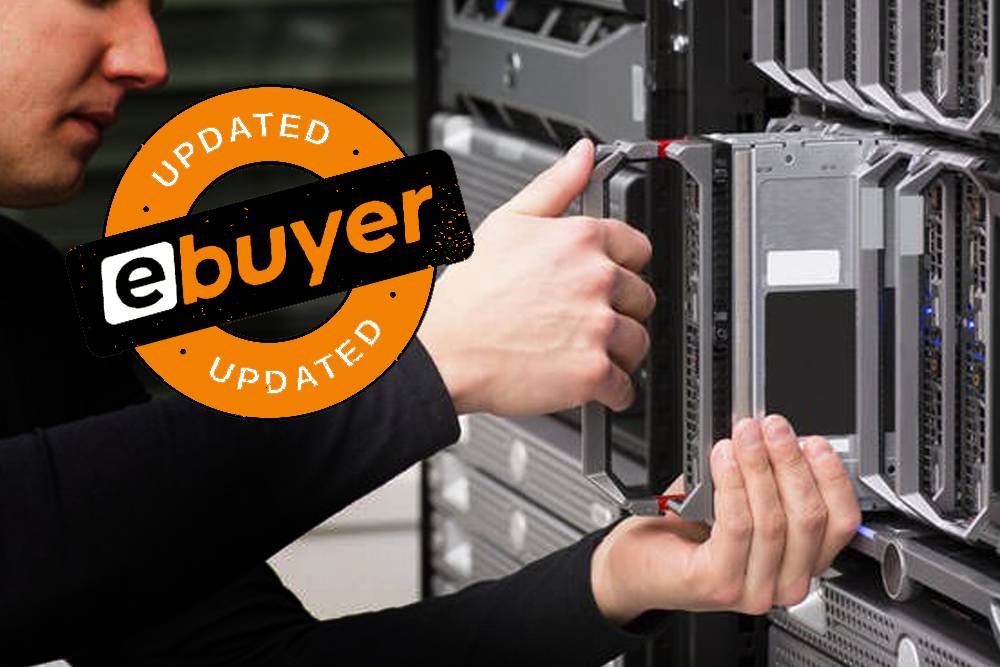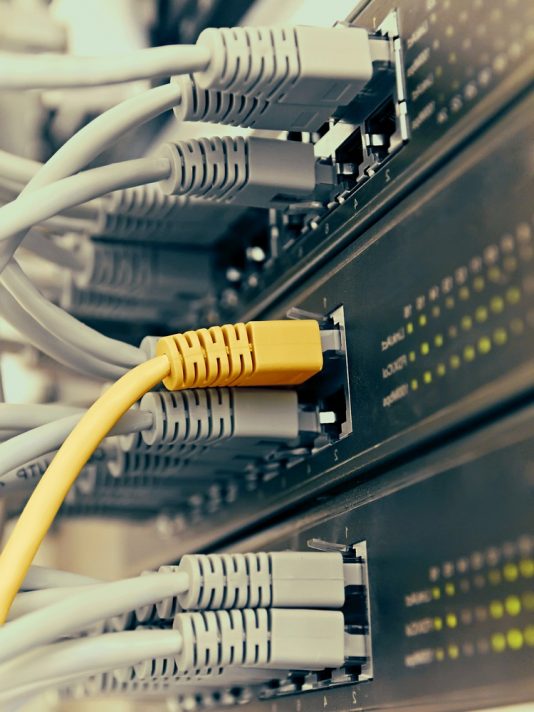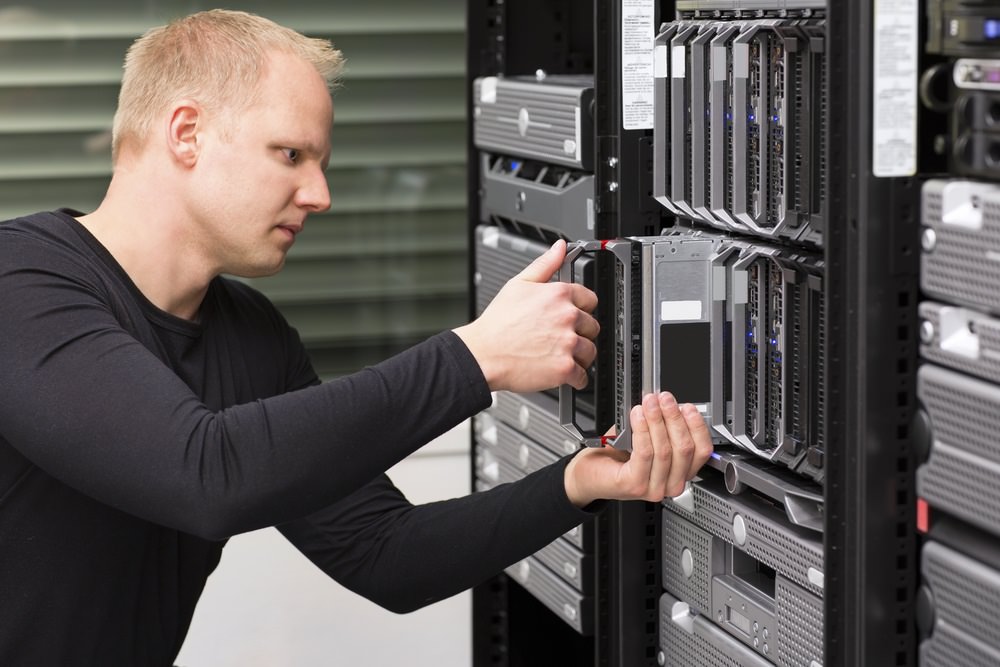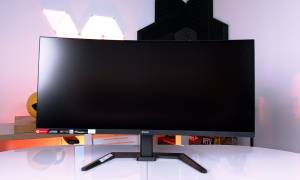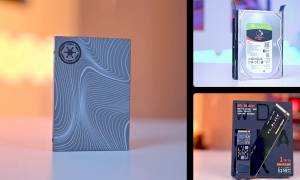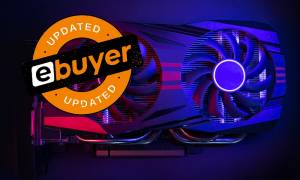Updated June 2023
No matter if you’re a solo worker from home or part of a unified office team, it pays to share and back up your work. This can be done through spare hard disk drives, or even via the cloud, but one thing that businesses could consider is a small office server.
But unless you’re tech-savvy, you might not actually know what a server is, or how servers work. Fortunately, Ebuyer is here to help. We’ve pulled together a beginner’s guide to servers so you can learn how to set up or create a server with minimal stress.
What is a server?
First things first, let’s clear up what a server is.
Servers act as platforms for sharing data, like files and images, and applications, like email, across multiple users. A server uses many of the same components as a regular desktop PC, but these are usually of a higher grade, designed and built for constant use on a daily basis.
Many of these components may be duplicated within a server so it remains operational should one of its power supplies, hard drives, fans, or network ports fail, and a server can be accessed via the network, so you can ultimately use them from within or outside your place of work.
What is the difference between a server and a desktop PC?
Although they share many of the same components and similar-looking cases, servers have a higher specification and are used for processing data, rather than a PC, which performs tasks and runs applications.
A server can also be massively expanded with multiple additional processors, hard drives, and more memory to perform its required task, much like how a PC can be upgraded for better performance, but their roles are fundamentally different.
Does my business need a server?
Most businesses could benefit from having a server, with the exception of independent freelancers or those working for themselves. When there are more than two or three colleagues in a business, a server to enable file sharing makes a lot of sense.
Remember, a server can do much more than simply store data, it can help manage your business.
What are servers used for?
So, with the question, “what is a server?”, out of the way, let’s turn our attention to what servers are actually used for.
As we said, the primary function of a server is to enable the easy sharing of files across a business. This is especially important if you work remotely with any of your team members and need to collaborate.
With everything being shared using a server, it also means that all of your documents and apps are backed up in the event of computer failure, so you’ll have multiple copies to hand.
In short, servers are an integral part of your file set-up.
What does a server do for small businesses?
Most small businesses could benefit from having their own server, and for medium and larger enterprises’ one or more servers are essential. If you use two or more computers in your business, a server could greatly increase your efficiency and productivity.
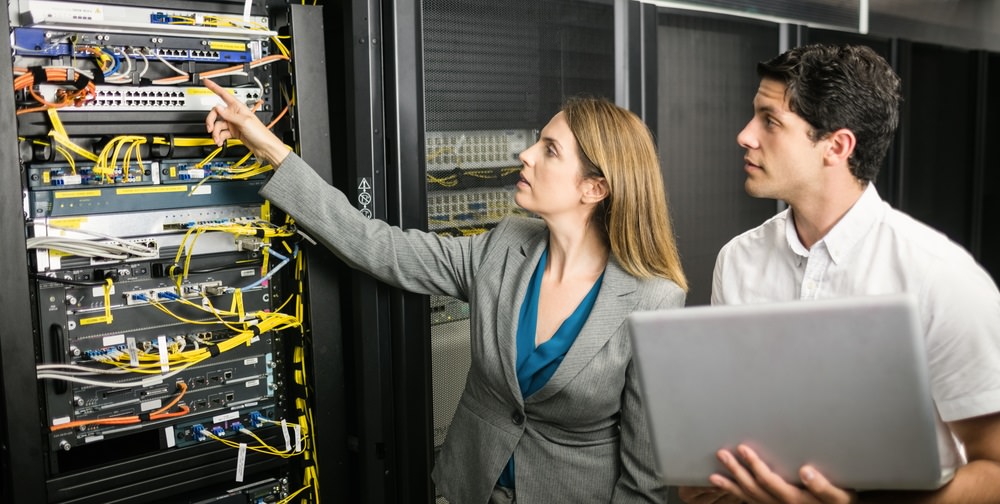
On top of this, having a small office server, that centrally stores your data, makes everything more secure and reduces the need to have duplicated documents emailed back and forth between workmates.
Another layer of convenience is added by the ability to remotely manage and maintain the server itself. Problems with the server or network can be diagnosed and fixed from external locations and routine maintenance and updates can also be carried out remotely.
Peripherals such as printers can also be managed using servers, so all users on the network have access and the system will queue jobs for printing. And other software, such as CRM systems can be shared on the server along with client information, stock control systems, and accounting procedures.
Another nifty feature is their ability to host your company’s website. This removes the need to rely on third-party hosting and makes in-house web development much easier and more convenient. By the same token, internet usage within the business can be controlled and email can be managed centrally on a server as well.
Lastly, one of the biggest plus points in favour of having a server is that data is securely stored, and access to the network can be strictly controlled through centralised authentication systems that are difficult to breach.
In other words, the business can be managed from one central location rather than many different and isolated, PCs.
How servers work for data backup and recovery
When it comes to the process of backing up data and recovering it in the event of deletion or corruption, implementing it is very simple. You just need to ensure your computer is backed up to the server or that files are saved there.
Unlike desktop PCs, a crashed hard drive in a server is not a disaster which will cause chaos within your business. Instead, it is an easily managed event thanks to a server’s other redundancy drives.
What is central authentication?
As we’ve mentioned, a server can manage many different tasks and offers a high degree of convenience. One function it can provide is centralised authentication, which allows a server to store all usernames and passwords to control access to the computers in the network.
Using this process, employees within a business can use any computer in the network, and by logging in with their stored details, will see their own desktop no matter which machine they are using.
With centralised authentication, access to the network, or any part of the network, can be easily controlled.
What are the different types of servers?
As you can imagine, there are quite a few types of servers to choose from. We’ve listed the two most common types below.
Dedicated servers
Dedicated servers are the ideal server for the small business team. These servers are hosted via the web and give you exclusive use of the entire server for all your data needs.
Many smaller businesses will be able to use a single server for all their tasks, but for larger companies, multiple servers will likely be needed, with each having a specific purpose.
The most common types of dedicated servers are print, email, web, and file servers. Allocating a dedicated server to a particular purpose allows resources to be channelled to where they are most needed and makes each server easier to manage overall.
In-office servers
Office servers are physical servers you keep in the office. They can be used to link every computer and peripheral in the building but can also be used to manage CCTV systems and security systems.
What does a server look like?
Once you’ve chosen to install a server, the next question that needs addressing is which server would suit your business best?
When choosing your server, three basic questions need answering:
- Which form factor will you choose?
- What specifications will your server have?
- Which software will you run?
Server form factor
There are three distinct form factors to choose from when picking your server: tower, rack, and blade. If you choose a dedicated server, then this will all be handled for you by the server hosts. If you choose an in-office server, then the one you choose will depend on the following factors:
- Where is the server to be located?
- Are multiple servers required?
- Do you intend to virtualise the servers?
Tower servers
Tower servers are self-contained, free-standing units that are the ideal server for smaller business teams. They’re the size of a normal desktop computer, so can fit under or even on top of a desk. They offer a complete all-in-one solution.
However, while a tower server may have room for a considerable number of hard drives, as they often act as centralised storage for the whole business, their processing and memory capabilities will usually be less than that of a rack server. If greater processing power is required, a rack server is often chosen.
Rack servers
As the name suggests, rack servers are stored in racks, commonly within a small cabinet or housed in a dedicated data room. Rack servers have built-in expansion slots and are more scalable than tower models as they can be used with virtualisation platforms or connected to NAS or SAN external storage systems.
Rack servers will either have a small form factor designed for a dedicated use; web, email, file, etc…, or a larger form factor designed for virtualisation. In the latter case, a large amount of processing power and memory may be placed in a single server chassis to run many virtual servers on the hardware.
It’s also common for rack servers to only use hard drives for their software operating system and connect to an external storage array shared by multiple physical and virtual servers.
Contained within cabinets with their cable management system, rack servers save on space and are an efficient way in which small to medium businesses can run their networks.
Blade servers
The most compact of all server types, blade servers need less space than even rack models, which means that more servers can be packed into the same space while reducing the room they take up.
Ideal for businesses that process lots of data, these servers store data on blades but can also be easily connected to external storage such as NAS.
Blade servers offer more efficient cooling and use less energy than other types of servers as components can be shared between servers. Everything can be managed from one place.
Server specifications
A server uses the same basic components and configuration as a desktop or gaming PC, though it will typically carry a much higher specification. For example, a single server will often house multiple multi-core processors. The processor, or CPU, should have as high a specification as possible.
The faster the processor, and the more cores it has, the faster it can process information and the more tasks it can perform. The basic rule here is the greater the number of cores the better the performance.
What is a multi-core processor?
Most servers will have a CPU or processor with multiple cores. The cores are the number of processors within the processor itself and typically there will be either two or four cores.
Each core can handle different tasks, thereby enabling the server to run faster so the higher the number of cores the better. Multi-core processors allow you to do this more efficiently and also allows for server virtualisation.
Server memory
As the processing power of a server increases, more memory is required to support the greater workload. Servers capable of taking two or more processors will require additional memory to support these extra processors. Again, if you want more server performance, you’ll need more memory.
Memory, or RAM, is what a server uses to temporarily store open files for fast access. Having insufficient memory will cause the server to run slowly, so the more RAM is installed, the better. All servers have RAM preinstalled, but most will be capable of being expanded with more memory.
To say as ‘much as possible’ is an easy answer, but it’s true, nevertheless. Most units are scalable and easy to upgrade, so adding extra server memory is a straightforward process.
Server hard drives
Another way in which a server differs in specification from a normal desktop PC is in the number of hard drives it has, and how it uses external storage.
A hard drive in a server will typically be more resilient and faster than a desktop PC, and a server will often house multiple hard drives to cope with the larger number of files it needs to store.
Another significant difference is server hard drives are designed for around the clock 24/7 use.
These hard drives can, depending on the server, be combined into a RAID (Redundant Array of Independent Disks) system. RAID is an efficient storage system as it saves data across several drives rather than on just one, but its key function is to prevent data loss in the event of a drive failure.
What is RAID?
RAID is a feature found within many servers and storage devices and is a system for governing how data is written to hard drives. There are many different types of RAID, so we’ll focus on the most common.
RAID 1
RAID 1 is the simplest type of raid and only requires two disks to function. When files are stored with RAID 1, it mirrors the data written from the first to the second disk as well.
This provides an identical copy of the data, so a spare is retained should one drive fail, although the server would need to be powered down to retrieve the data. This type of RAID is most often used for mirroring the operating system of a server.
RAID 5
RAID 5 offers a greater degree of data security than RAID 1. It works across a minimum of 4 disks, and strips the data across all 4, rather than using a mirroring technique.
This striping is done in such a way that a parity block is created on each disk, so if one is removed, the data from this disk can be rebuilt using the parity block from the remaining disks.
It is common when using RAID 5 to deploy ‘hot-swap’ disks in the server, as these offer the ability to remove a disk from the array without powering down the server.
This is key, as if a disk in a RAID 5 array were to fail, not only is the data protected due to the striping but the disk can also be replaced with a new one, without any downtime to the server; the array can be automatically rebuilt.
RAID 6
RAID 6 is essentially RAID 5 and 1 combined, a combination of the striping of the data and then mirroring the parity block. This works the same as RAID 5 but offers further protection in the case that two disks fail simultaneously, and the array can be rebuilt without any loss of data or downtime to the server.
External server storage
For enterprise users, the storage capacity of servers can be greatly increased by using external systems. NAS (Network Attached Storage) systems offer storage which can cope with massive volumes of data and can greatly increase productivity. Check out our NAS buying guide for more information.
Software for servers
Like any other PC, a server needs an operating system, but the software used differs. Like desktop PCs, servers use Windows, and as you would expect from Microsoft, Windows server software provides many benefits and advantages over other versions.
How to create a server?
If you’re wondering how to create a server for a small business, the steps are simple:
- First, you’ll need to be aware of the number of users, IP addresses, computers, and locations. All of these will be required to get your users linked to the server.
- Next, make sure the server type you’re interested in has the hardware and software specifications you need. This can be tricky to nail but you want to be sure that you at least have the right operating system on your computers.
- You’ll need to gather all extra items you might need to connect the server, like ethernet cables and external hard drives.
- Once you have your server, you may need to install its operating system with the instructions provided, otherwise, you can move on to the next step.
- With your server ready, you can configure your server to backup, activate its remote access, and set up the sharing options. You can find tutorials for this online or hire an expert for help
There’s a lot that goes into making a server for a small business, but with these tips, you should be well on your way to using one to enhance workplace productivity. Get in touch with the Ebuyer team today for help and support in buying or setting up your server or head over to the Ebuyer blog for more articles like this one.

